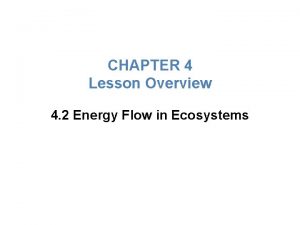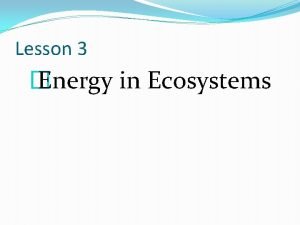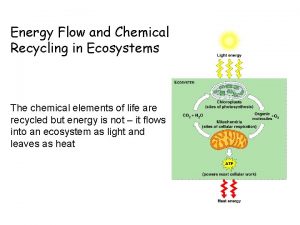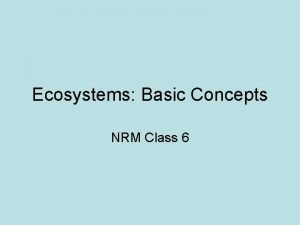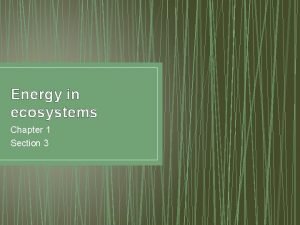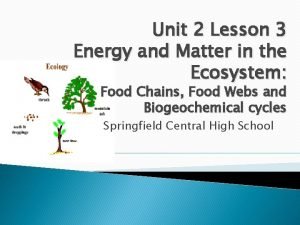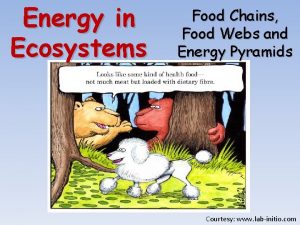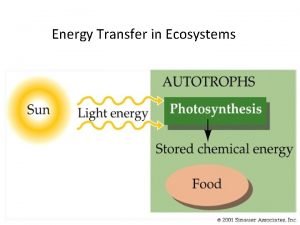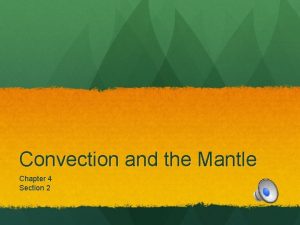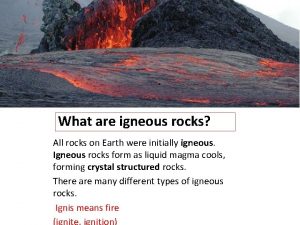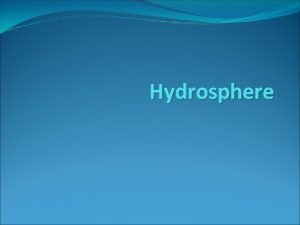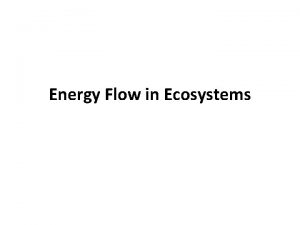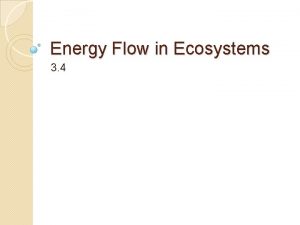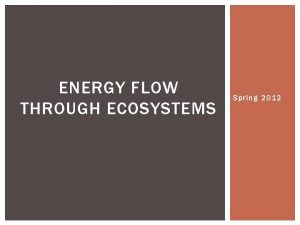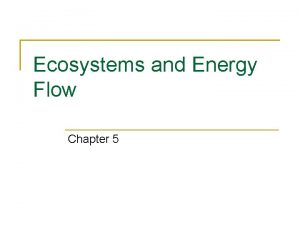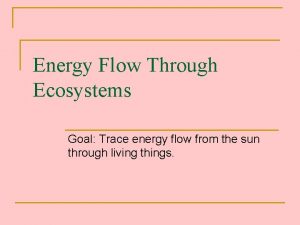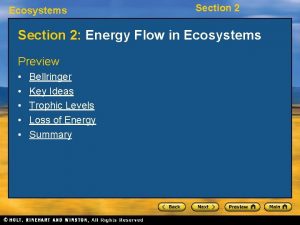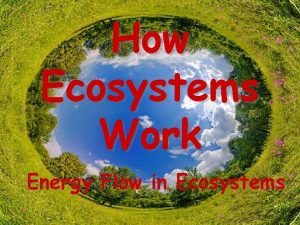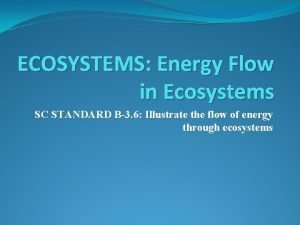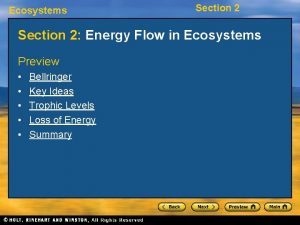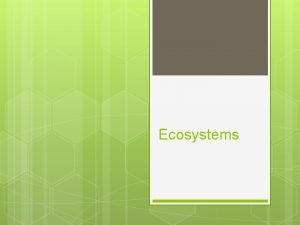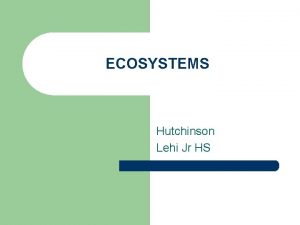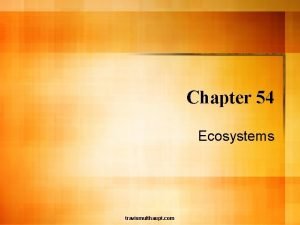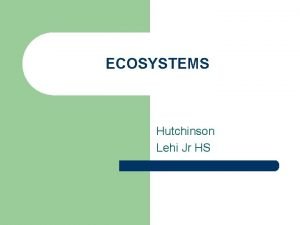Energy Flow in Ecosystems All energy on Earth























- Slides: 23

Energy Flow in Ecosystems

• All energy on Earth depends on the Sun. Organisms capable of using the sun’s energy directly are called Producers. Plants & Algae are Producers.

• Producers make their own food; they are autotrophs. • They do this through Photosynthesis: Water + Carbon Dioxide Glucose + Oxygen

Photosynthesis needs: • Sunlight • Water • Carbon Dioxide And, inside plant cells: • Chlorophyll • Chloroplasts

• Producers support the animals that can’t make their own food – heterotrophs. • These are the Consumers • Animals that eat the producers are Primary 1 o Consumers.

1 o Consumers = Herbivores

• These 1 o Consumers are the food source for other heterotrophs, the Secondary 2 o Consumers. • In turn, they support the next level, the Tertiary 3 o Consumer. • These organisms can be carnivores or omnivores.

Carnivore or Omnivore?

• There are some consumers which are only predators, and never prey. • These are the Top Consumers, and they are usually strict carnivores, although some are omnivores.

Top Consumers

• Whether an organism is a producer or consumer is part of defining its Trophic Level. • Trophic Levels are categories of organisms based on how they get their energy.

• If we link organisms by the rank of their Trophic Level, we get a Food Chain:

• If we link several Food Chains, we get a Food Web:

• If we link several Food Chains, we get a Food Web:

• Food webs include specialist consumers, such as: • Decomposers • Scavengers • Symbionts

• With every step in a food chain, some energy is lost. • This is often as body heat, so in a way, it’s not ‘lost’… it’s helpful • But that energy can’t provide nutrition to others, so that way, it’s ‘lost’ • Food Pyramids illustrate this

• Food Pyramids

• Food Pyramids measure T. E.

• In any ecosystem, many producers support only a few top consumers.

• Bioaccumulation or Biomagnification is a problem in ecosystems because of energy flow. • Lower level consumers get amounts of a pollutant that is not toxic, but top consumers get very toxic effects.

Bioaccumulation: Arctic Food Chain

Bioaccumulation: Great Lakes Food Chain

Bioaccumulation: Bald Eagle & Peregrine Falcon
 How does energy move through most ecosystems on earth
How does energy move through most ecosystems on earth Chapter 4 lesson 2 energy flow in ecosystems answer key
Chapter 4 lesson 2 energy flow in ecosystems answer key Energy in ecosystems lesson 3 answer key
Energy in ecosystems lesson 3 answer key Flow of energy
Flow of energy Primary consumers
Primary consumers Section 1 energy flow in ecosystems
Section 1 energy flow in ecosystems Provides practically all the energy for ecosystems
Provides practically all the energy for ecosystems Earth's ecosystems
Earth's ecosystems Energy naturally flows from warmer matter to cooler matter.
Energy naturally flows from warmer matter to cooler matter. Flow of energy vs flow of matter
Flow of energy vs flow of matter Name three lines
Name three lines Section 3 energy in ecosystems
Section 3 energy in ecosystems Chapter 42 ecosystems and energy
Chapter 42 ecosystems and energy Energy flow trophic levels
Energy flow trophic levels Lesson 3 energy and matter in ecosystems answer key
Lesson 3 energy and matter in ecosystems answer key Lab food chains and energy in ecosystems
Lab food chains and energy in ecosystems Energy transfer in ecosystem
Energy transfer in ecosystem Scientists think that convection currents flow in earth's *
Scientists think that convection currents flow in earth's * Igneous rock formation
Igneous rock formation How excellent is thy name
How excellent is thy name All authority in heaven and earth
All authority in heaven and earth Who am i that the lord of all the earth
Who am i that the lord of all the earth The hydrosphere includes
The hydrosphere includes Sing your praises saying
Sing your praises saying

